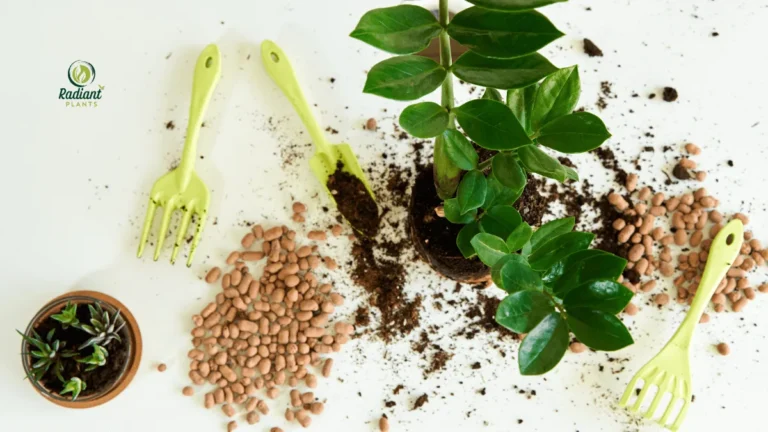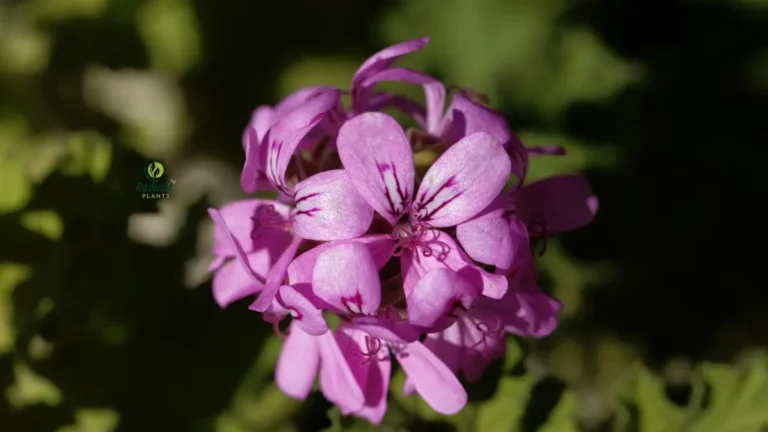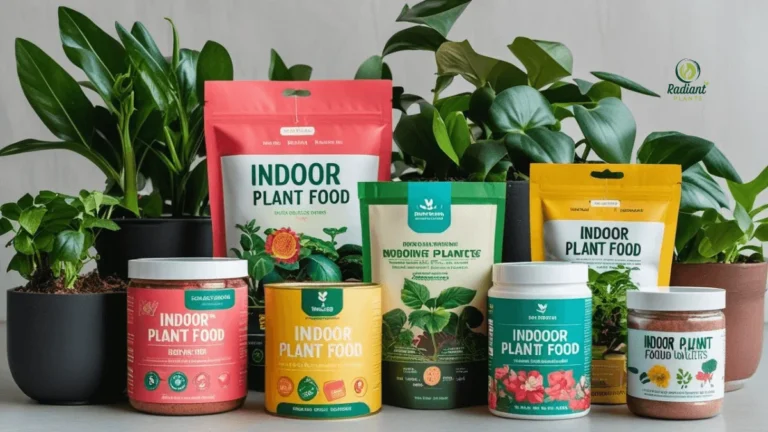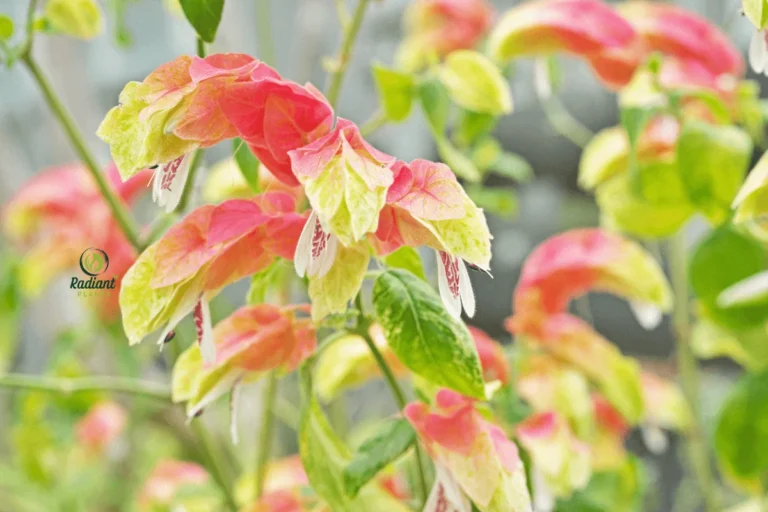African Iris Plant Full Sun: Vibrant Growth Made Easy
If you’re wondering whether your African iris plant full sun can truly thrive in full sun in bright, open spaces, the answer is a confident yes. This striking perennial loves sunlight—often rewarding you with more blooms, stronger foliage, and a bold presence in the garden when it gets the light it craves. But like any sun-loving beauty, it comes with a few rules to keep it vibrant.
In this guide, you’ll learn exactly how much sun the African iris needs, how to care for it in hot or sunny locations, and what to do if the leaves start to brown or the blooms slow down. You’ll also discover the best places to plant it, how to avoid common mistakes, and expert tips for propagation so you can expand your collection with ease.
Whether you’re styling a sunny border, filling a walkway, or simply wanting a low-maintenance plant that shines in full sun, this article will walk you through everything you need to grow your African iris with confidence and joy.
Table of Contents
Table of Contents
Does the African Iris Plant Grow Well in Full Sun?
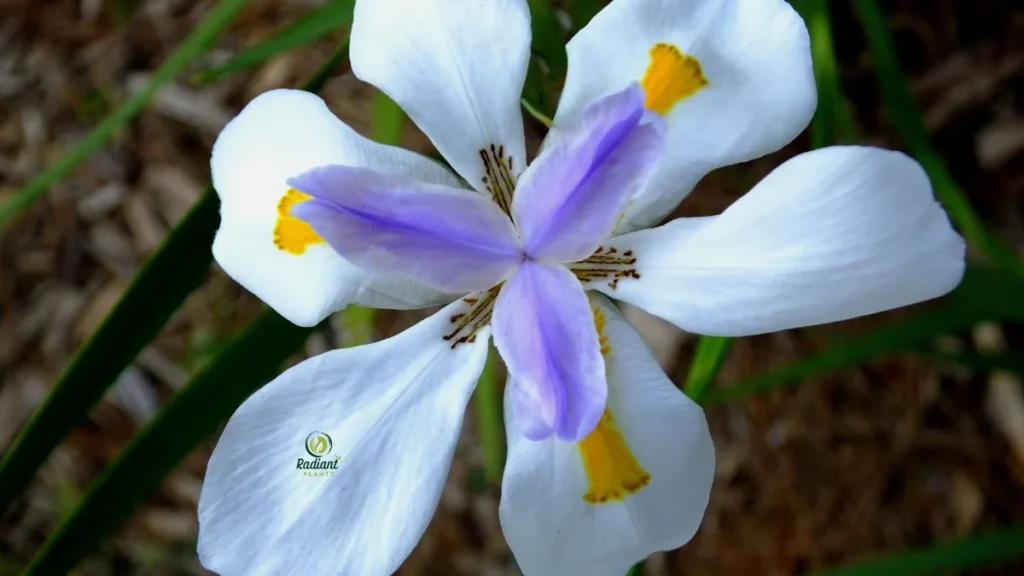
Can African Iris Grow in Full Sun?
If you’re thinking about placing your African iris plant full sun, you’re making the right choice. This hardy, sun-loving perennial thrives in bright conditions and often performs better when given full sunlight rather than partial shade. Garden guides and horticultural experts consistently note that the African iris shows its strongest growth, richest leaf color, and most reliable blooms when exposed to full sun throughout the season.
How Many Hours of Sun Do African Iris Need?
For optimal growth, your African iris plant full sun should receive 4–6 hours of direct sunlight at a minimum. More sun typically leads to more vigorous foliage and a steady stream of blooms. When grown in shady areas, the plant’s flowering habits decline—blooms become infrequent, and growth may look stretched or weak. Full sun ensures the plant stores enough energy to maintain its fast-growing nature and continuous flowering cycle.
Does African Iris Bloom Better in Sun or Shade?
African iris blooms best in full sun—shade significantly reduces its flowering potential. A healthy African iris plant full sun position promotes fuller, more frequent blooms thanks to improved sunlight tolerance and heat exposure resilience. Still, it’s helpful to understand sun intensity. Morning sun strengthens growth without stress, while late-afternoon sun can be harsher in hot climates. A layer of mulch and consistent watering help protect the plant during extreme heat spells.
If your plant shows yellowing or poor blooming, it may be related to root issues—check our guide Root Rot Treatment: 7 Proven Ways to Stop the Spread on RadiantPlants.com for solutions.
African Iris Plant Care in Full Sun

Watering Needs in Sunny Locations
Caring for an African iris plant full sun begins with understanding its watering rhythm. Although this species is considered a drought-tolerant plant, it still performs best with consistent moisture—especially during long stretches of heat. In hot climates, aim to water deeply once or twice a week, allowing the top 2–3 inches of soil to dry between sessions. Deep watering encourages strong root development, which helps the plant handle sun exposure and high temperatures.
Watch for signs of stress. Underwatering often shows up as curling leaves, browning tips, or slowed flowering. Overwatering, on the other hand, leads to yellowing leaves or mushy rhizomes. Ensuring proper moisture balance is key to long-term garden maintenance and preventing common issues like root rot.
Soil Requirements for Vibrant Growth
Your African iris plant full sun, will produce its best foliage and blooms in well-draining soil. Sandy loam or loamy soil enriched with compost is ideal. This heat-tolerant plant dislikes heavy, compacted soil because it restricts air circulation and traps water around the roots.
If your soil retains moisture for too long, amend it with coarse sand, perlite, or pine bark fines to improve drainage. A slightly raised bed or slope is also beneficial, especially in rainy climates. Good soil structure ensures the roots stay oxygenated—an essential factor for flowering perennials like African iris.
Fertilizer Routine for Strong Blooms
A thoughtful feeding routine enhances bloom production for your African iris plant full sun. Apply a balanced slow-release fertilizer (10-10-10) in early spring as new growth appears. For extra flowering power, supplement with a low-nitrogen, phosphorus-rich formula during mid-season. Phosphorus encourages bud formation and helps maintain strong, upright bloom stalks.
Avoid excessive nitrogen, which forces leafy growth at the expense of flowers. Two light feedings per year are enough to sustain healthy growth without overwhelming the plant.
If you love plants with bold color and structure, explore our guide on Croton Plant Care Tips for a Vibrant, Healthy Plant on RadiantPlants.com for more styling inspiration.
Best Placement and Landscape Uses in Full Sun Gardens

Choosing the right location for your African iris plant full sun, can transform your outdoor space into a polished, textural landscape. This versatile perennial fits beautifully into many landscape design styles thanks to its upright foliage, clean form, and reliable blooms. Whether you’re designing a modern garden or a more relaxed cottage-style space, the African iris blends seamlessly while adding structure and movement.
One of the best places to use African iris is along borders and walkways. Its clumping habit creates natural rhythm and repetition—two principles that professional designers rely on for balanced outdoor styling. Planted in a row, the tall, sword-like leaves form a striking visual line that guides the eye and defines pathways without overwhelming the space. Because the plant stays neat and compact, it also works well in poolside gardens, where low maintenance and a clean silhouette matter most.
In sun garden ideas, pairing your African iris plant full sun with other heat-tolerant plants enhances contrast and creates layered texture. Great companion plants include lantana, ornamental grasses, kangaroo paw, and dwarf agapanthus. These plants share similar light and watering needs, ensuring harmony in both care and appearance.
If you’re designing with shape in mind, group African iris in clusters of three or five. Odd-number groupings mimic natural patterns and create more dynamic compositions. For an architectural look, mix them with bold foliage plants or sculptural pots to elevate visual impact.
To explore more ways to style statement plants around your home and garden, check out our guide Why the Pink Panther Plant Is Your Next Must-Have on RadiantPlants.com for fresh outdoor styling inspiration.
Common Problems When Growing African Iris in Full Sun
Even though the African iris plant full sun, is a hardy, heat-tolerant perennial, gardeners occasionally face challenges that affect its health and flowering. Understanding the most common problems helps you take quick action and keep your plants thriving.
Leaf Scorch and Browning Tips
One of the most frequent issues is leaf scorch, which appears as browning or crispy leaf tips. This usually happens when the plant experiences heat stress or irregular watering. While African iris tolerates full sun, extremely hot afternoons can stress the leaves, especially if the soil dries out too quickly. Browning can also result from over-fertilization or accumulation of salts in the soil, so monitoring fertilizer use and flushing the soil occasionally is wise.
Heat Stress vs. Drought Stress
Distinguishing between drought stress and heat stress is crucial. Drought-stressed plants show drooping, curled, or pale leaves, while heat-stressed plants may display scorched margins despite adequate watering. Mulching around the base can help maintain consistent soil moisture and protect roots from extreme temperature fluctuations.
Poor Flowering in Extreme Sun
Another common concern is a lack of blooms. Even in full sun, African iris may flower poorly during periods of extreme heat or if planted in compacted, nutrient-poor soil. Regular pruning of spent flowers and providing balanced fertilization encourages stronger and more frequent blooms.
Preventing and Troubleshooting Issues
Routine garden maintenance—proper watering, good drainage, and pest checks—keeps your African iris plant full sun. For root-related problems, including rot caused by overwatering, see our guide Root Rot Treatment: 7 Proven Ways to Stop the Spread. And for insect infestations, check How to Get Rid of Aphids: 5 Mistakes to Avoid to protect your plants before damage occurs.
By understanding these stress signs and acting early, your African iris will remain a vibrant, sun-loving highlight in your garden year after year.
Propagation Tips for a Healthy African Iris Plant
Propagating your African iris plant full sun is a rewarding way to expand your garden and enjoy more of these vibrant, sun-loving perennials. The easiest and most reliable method is through dividing clumps, which also rejuvenates older plants and encourages stronger blooms.
Dividing Clumps
The best time to divide African iris is during spring or fall, when the plant is not in peak bloom and temperatures are moderate. Start by carefully digging up the clump, taking care to preserve as many roots as possible. Gently separate the rhizomes into sections, ensuring each division has at least two or three healthy shoots and a portion of roots. Remove any damaged or diseased leaves and roots to promote healthy new growth.
Once divided, allow the sections to rest in a shaded area for a few hours to let any wounds dry slightly, which helps prevent rot and disease.
Planting the Divisions in Full Sun
When replanting, choose a spot with full sun exposure and well-draining soil. Prepare the planting bed by loosening the soil and incorporating organic compost to enrich nutrients and improve aeration. Plant each division at the same depth as it was previously growing, spacing clumps about 12–18 inches apart to allow airflow and growth.
Water thoroughly after planting, keeping the soil consistently moist for the first few weeks to help roots establish. Mulching around the base helps retain moisture and regulate soil temperature. With proper care, your new African iris divisions will settle quickly and begin producing lush leaves and vibrant blooms within the growing season.
For more propagation tips and plant care inspiration, explore Arabian Jasmine Plant Care: Tips for Growing This Fragrant Beauty on RadiantPlants.com, which offers expert advice on expanding your garden with sun-loving perennials.
Common Mistakes to Avoid When Growing African Iris in Full Sun
Even though the African iris plant full sun is a resilient, sun-loving perennial, gardeners often make simple mistakes that limit its growth and bloom potential. Being aware of these pitfalls helps ensure a vibrant, healthy plant year after year.
Planting in Poor-Draining Soil
African iris thrives in well-draining soil. Planting it in heavy clay or compacted soil can trap water around the roots, leading to rot and poor flowering. Always amend the soil with organic compost, coarse sand, or perlite to improve drainage. Proper soil preparation avoids full sun errors and helps your plant thrive in bright outdoor conditions.
Allowing Prolonged Drought
Although drought-tolerant, the African iris still needs consistent moisture, especially when newly planted or during prolonged heat. Ignoring watering schedules can cause leaves to curl, brown, or become scorched. Mulching around the base helps retain soil moisture and protects roots from extreme temperatures, reducing the risk of improper watering damage.
Over-Fertilizing
Excessive fertilizer encourages leafy growth at the expense of blooms and can harm roots over time. Use a balanced, slow-release fertilizer during the growing season and supplement lightly with phosphorus-rich nutrients to promote flowering. Avoid high-nitrogen feeds that may cause lush foliage but few blooms.
Planting in the Wrong Sun Intensity
While African iris prefers full sun, intense afternoon heat in extremely hot climates can stress the plant. Placing it in partial shade during the hottest hours helps prevent leaf burn while still allowing sufficient sunlight for flowering. Understanding the balance between sunlight and heat is key to maintaining a healthy, vibrant plant.
By avoiding these common gardening mistakes, your African iris plant full sun will flourish, producing bold foliage and elegant blooms. For more ideas on designing vibrant gardens with sun-loving perennials, check out Red Sister Plant: The Bold Beauty Your Home Deserves on RadiantPlants.com.
FAQs for “African iris plant full sun”
Do African irises like sun or shade?
African irises prefer full sun to partial shade. They bloom best with 4–6 hours of sunlight daily. In very hot areas, morning sun with light afternoon shade prevents leaf scorch while keeping flowers vibrant.
Can African iris grow in full sun?
Yes! The African iris plant full sun in bright, sunny locations, ideally receiving 4–6 hours of direct sunlight daily. Full sun encourages robust foliage, frequent blooms, and strong root development. In extremely hot climates, morning sun with light afternoon shade can prevent leaf scorch and stress.
How often should I water African iris in full sun?
Even though it’s a drought-tolerant plant, African iris benefits from consistent watering, especially in hot, sunny gardens. Water deeply once or twice a week, allowing the top 2–3 inches of soil to dry between sessions. Mulching can help retain moisture and protect roots from heat exposure.
Why are my African iris leaves turning brown?
Browning leaves often result from leaf scorch, drought stress, or improper watering. Excessive sun exposure, irregular moisture, or over-fertilization can cause tips to brown. Check soil drainage and adjust watering frequency to prevent stress. Proper soil preparation also helps the plant withstand full sun conditions.
How can I make African iris bloom better in full sun?
To boost blooms, ensure your African iris plant full sun receives adequate sunlight, well-draining soil, and balanced fertilization with phosphorus-rich nutrients. Remove spent flowers to encourage continuous blooming. Avoid over-fertilizing, which promotes leaf growth over flowers.
Can African iris tolerate extreme heat?
Yes, this heat-tolerant plant thrives in sunny, warm climates. However, extreme afternoon heat may cause slight leaf scorch. Providing morning sun with light afternoon shade, proper watering, and mulching helps African iris flourish without stress.
What is the best soil for African iris in full sun?
African iris prefers loamy, well-draining soil enriched with organic matter. Avoid heavy clay that traps water around roots. Amendments like compost or coarse sand improve drainage and oxygenation, supporting healthy flowering perennials in sunny gardens.
How do I propagate African iris?
The easiest method is to divide clumps in spring or fall. Ensure each division has roots and 2–3 healthy shoots. Plant divisions in full sun with well-prepared soil and consistent moisture to establish quickly.
The African iris plant full sun, is a stunning, resilient perennial that brings structure, color, and elegance to sunny gardens. With at least 4–6 hours of direct sunlight, well-draining soil, consistent watering, and occasional fertilization, this sun-loving plant rewards gardeners with vibrant foliage and elegant, long-lasting blooms. Proper placement, attention to watering, and awareness of common issues like leaf scorch or poor flowering help ensure your African iris thrives year-round.
Beyond its beauty, African iris is low-maintenance, drought-tolerant, and versatile—perfect for borders, walkways, or poolside gardens. Propagating through clump division allows you to expand your sunny garden oasis with ease. By following these care tips, you’ll enjoy a healthy, flourishing plant that enhances both the style and structure of your outdoor spaces.
Ready to elevate your garden further? Explore more sun-loving perennials and styling inspiration by reading our guide, Red Sister Plant: The Bold Beauty Your Home Deserves. Start planting your African iris today and watch your sunny spaces come alive with color, texture, and effortless charm.


